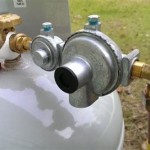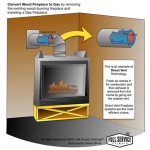Brick Fireplace Makeover: Understanding the Cost Factors
A brick fireplace is often a focal point in a home, contributing warmth, character, and aesthetic appeal. Over time, however, the brick may become outdated, stained, or simply not align with evolving design preferences. In such cases, a fireplace makeover can significantly enhance the room’s overall appearance and increase property value. Understanding the costs associated with a brick fireplace makeover is crucial for homeowners planning such a project.
The cost of a brick fireplace makeover can vary dramatically based on several factors. These factors encompass the extent of the renovation, the materials used, the complexity of the design, and the geographic location of the project. Minor cosmetic updates will naturally cost less than a complete structural overhaul or significant design alteration. Therefore, a thorough assessment of the existing fireplace and a clear vision for the desired outcome are essential prerequisites for developing an accurate budget and avoiding unexpected expenses.
Before embarking on a fireplace makeover, it is important to define the scope of the project. Are you simply looking to refresh the brick's appearance with paint or a stain? Or are you interested in more substantial changes, such as adding a mantel, hearth, or even refacing the entire fireplace with new materials? The more extensive the planned changes, the higher the potential cost. Homeowners should prioritize their needs and desires, balancing them with budgetary constraints to achieve a satisfactory result.
The Impact of Materials on Makeover Cost
The materials selected for a brick fireplace makeover significantly influence the overall cost. Options range from relatively inexpensive paint and stain to more costly materials like stone veneer, tile, and custom-built mantels. The choice of materials should not only reflect the desired aesthetic but also consider their durability, maintenance requirements, and compatibility with the existing structure.
Paint and stain are among the most affordable options for updating a brick fireplace. Painting can completely transform the appearance of the brick, allowing homeowners to match it to their desired color scheme. Stain, on the other hand, enhances the natural variations in the brick while providing a protective sealant. Both options are relatively easy to apply, making them suitable for DIY projects, although professional application may yield a more consistent and durable finish.
Stone veneer offers a more substantial transformation, providing the look and feel of natural stone at a lower cost. Stone veneer is typically composed of concrete or manufactured stone adhered to a lightweight backing. It is available in a wide variety of colors, textures, and styles, allowing homeowners to achieve a customized look. Installation of stone veneer requires specialized skills and tools, making professional installation highly recommended.
Tile is another popular choice for brick fireplace makeovers, offering a versatile and durable surface. Tile options range from classic ceramic and porcelain to more decorative materials like glass, mosaic, and natural stone. Tile can be used to create intricate patterns and designs, adding a unique touch to the fireplace. Installation of tile requires meticulous preparation and precise application, typically necessitating the expertise of a professional tile setter.
Adding or replacing a mantel can also impact the cost. Prefabricated mantels are generally less expensive than custom-built mantels, which can be crafted from a variety of materials, including wood, stone, and metal. The size, design complexity, and material of the mantel will influence its price. A custom mantel can be designed to perfectly complement the fireplace and the surrounding décor, but it comes at a premium.
The hearth, the area directly in front of the fireplace, is another area where material choices influence cost. Options include brick, stone, tile, and concrete. The size and material of the hearth should be considered in relation to the overall proportions of the fireplace and the room. A larger hearth may require more materials and labor, increasing the overall cost.
Labor Costs and Project Complexity
Labor costs constitute a significant portion of the overall expense of a brick fireplace makeover, particularly for projects that require specialized skills or extensive demolition and reconstruction. The complexity of the project directly impacts the amount of labor required and, consequently, the associated costs.
Simple cosmetic updates, such as painting or staining the brick, can often be completed by homeowners themselves, thereby minimizing labor costs. However, improper preparation or application can lead to unsatisfactory results and the need for costly corrections. Hiring a professional painter or contractor can ensure a smooth and durable finish.
More complex projects, such as installing stone veneer or tile, require the expertise of skilled professionals. These projects involve careful preparation, precise measurements, and specialized tools. Attempting to undertake such projects without the necessary skills and experience can lead to costly mistakes and potentially compromise the structural integrity of the fireplace.
If the makeover involves significant structural changes, such as removing or altering the chimney or firebox, it is essential to consult with a qualified structural engineer and obtain the necessary permits. These types of projects require specialized knowledge and adherence to building codes, which can significantly increase the labor costs. Ignoring building codes can lead to fines and the need for costly rework.
The age and condition of the existing fireplace can also influence labor costs. Older fireplaces may require extensive repairs or modifications to bring them up to code or to accommodate new materials. These repairs may involve patching cracks, repairing mortar joints, or even rebuilding portions of the fireplace. Addressing these issues is essential to ensure the safety and longevity of the fireplace.
Demolition work can also add to the labor costs. Removing old tile, stone, or a mantel can be a time-consuming and labor-intensive process. Proper disposal of demolition debris is also an important consideration, as some materials may require special handling. Professional demolition services can ensure that the work is done safely and efficiently.
Regional Variations and Additional Expenses
The cost of a brick fireplace makeover can vary significantly depending on the geographic location. Labor rates, material costs, and the availability of qualified contractors can all fluctuate from one region to another. Urban areas tend to have higher labor rates than rural areas, and areas with a higher cost of living may also have higher material costs.
Homeowners should obtain multiple quotes from local contractors to get a sense of the prevailing rates in their area. It is important to compare the quotes carefully, paying attention to the scope of work, the materials included, and any warranties offered. Selecting the lowest quote is not always the best approach; it is essential to consider the contractor's experience, reputation, and references.
In addition to the direct costs of materials and labor, there may be additional expenses associated with a brick fireplace makeover. These expenses can include permits, inspections, and disposal fees. Permits are typically required for any significant structural changes or alterations to the fireplace. Inspections are conducted to ensure that the work is done in accordance with building codes.
Disposal fees may be incurred for the removal of demolition debris. Some materials, such as asbestos, require special handling and disposal, which can add to the cost. It is important to factor in these additional expenses when developing a budget for the project.
Hidden costs can also arise during a fireplace makeover. For example, the discovery of unforeseen structural problems or damage can necessitate additional repairs. It is advisable to set aside a contingency fund to cover unexpected expenses. A contingency fund of 10-15% of the total estimated cost is generally recommended.
Finally, homeowners should consider the long-term costs of maintaining the updated fireplace. The choice of materials and the quality of the workmanship will influence the durability and longevity of the fireplace. Selecting durable materials and hiring qualified professionals can minimize the need for future repairs and maintenance.
By carefully considering the factors outlined above, homeowners can develop a realistic budget for their brick fireplace makeover and avoid unexpected expenses. A well-planned and executed makeover can transform a dated fireplace into a stunning focal point that enhances the beauty and value of the home.

Fireplace Makeover Process Total Cost In Honor Of Design

Old Brick Fireplace Makeover Costs And Options

Fireplace Makeover Process Total Cost In Honor Of Design

Brick Fireplace Makeover Pine And Prospect Home

Diy Fireplace Makeover Wood Slat

Our 200 Marble Fireplace Makeover Young House Love

Diy Fireplace Makeover Wood Slat

Brick Fireplace Makeover Before And After House Of Hipsters

Fireplace Makeover Process Total Cost In Honor Of Design

16 Red Brick Fireplace Makeover Ideas
Related Posts








